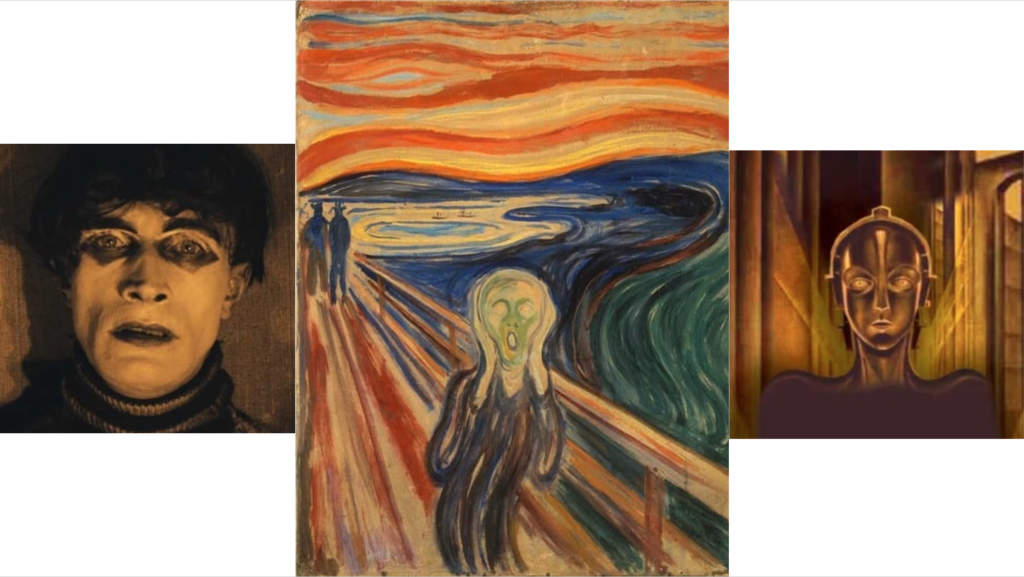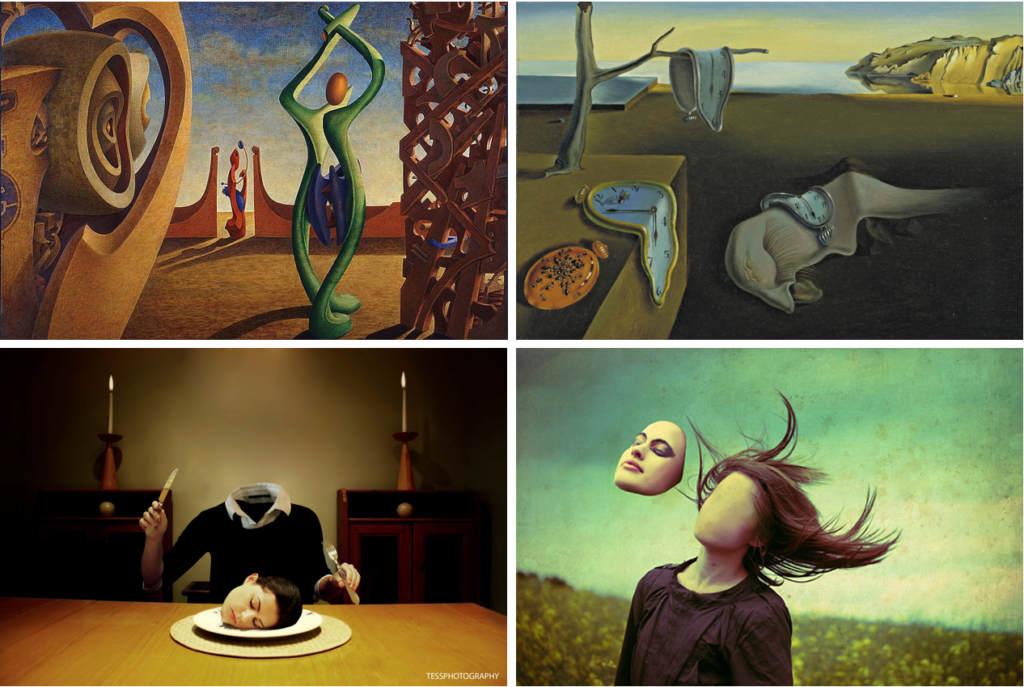Expressionism

Expressionism is a modernist movement which originated in Northern Europe during the early 20th century, it started within poetry and painting. It is known as the artistic style that captures the subjective emotions rather than the obvious, objective reality, it’s also the expression of inner experiences and spiritual themes. Some key characteristics of expressionism are: emotional intensity, distorted forms and exaggeration, rejection of realism, themes of alienisation, and influence on various art forms. Expressionism pieces often uses bold colours, exaggerated forms, and distorted perspectives to convey intense feelings such as anxiety, fear, or ecstasy. Some of the more notable artists who created work in the expressionist form are: Edvard Munch – The Scream (1893), a seminal work of psychological distress, Egon Schiele – known for expressive, raw, and sometimes unsettling portraits, Wassily Kandinsky – a pioneer of abstract expressionism, exploring the emotional power or colour and form and Ernst Ludwig Kirchner – a leading figure in the German expressionist group ‘Die Brücke‘.
Dadaism

Dadaism, or Dada, was an avant-garde art movement that emerged in the early 20th century, around 1916, in response to the horrors and absurdities of World War I. It is often seen as a rejection of traditional artistic values and conventions, as well as a critique of the logic and reason that had led to the war. Dadaists sought to challenge and disrupt the status quo, using absurdity, chaos, and irrationality as their primary tools. Although Dadaism was relatively short-lived, fading by the early 1920s, it had a profound influence on later art movements like Surrealism, Abstract Expressionism, and Pop Art. Dadaism remains one of the most radical and challenging art movements, and its spirit of questioning, disrupting, and rethinking continues to resonate in contemporary art and culture. Some notable figures: Marcel Duchamp – known for his ready-mades, like Fountain (1917) and L.H.O.O.Q. (a defaced Mona Lisa), Hannah Höch – a pioneer of photomontage, using cut-out images to challenge gender and political norms, Tristan Tzara – one of the movement’s founders and key figures in Dada poetry and manifestos and Hugo Ball – created the first Dada performances at the Cabaret Voltaire in Zurich.
Surrealism

Surrealism was an influential art and literary movement that began in the 1920s, it was influenced by Dadaism, but it developed into a distinct and unique approach to exploring the unconscious mind, dreams, and the irrational aspects of human experience. Surrealism is known for its strange, dream-like imagery and the attempt to reconcile the conscious and unconscious realms of experience. The key elements include dream imagery and illogical scenes, juxtaposition and unexpected combinations, influence of psychology and the subconscious and an element of surprise and playfulness. Some most known surrealist artists are: Salvador Dalí – known for The Persistence of Memory (1931), featuring melting clocks in a dreamlike landscape, René Magritte – famous for thought-provoking paintings like The Son of Man (a man with an apple covering his face), Max Ernst – experimented with collage, frottage (rubbing textures), and dreamlike imagery and Joan Miró – created abstract, playful works full of symbols and organic shapes.
Futurism

Futurism was an avant-garde art movement that began in Italy in the early 20th century, around 1909, and was closely tied to a fascination with modern technology, speed, and change. It was a celebration of the future, breaking away from traditional art forms and embracing innovation and dynamism. Futurism aims to capture the energy of modern life, from machinery to urban landscapes, and it rejected the past in favour of the new and the progressive. It was founded by the poet Filippo Tommaso Marinetti with his Futurist Manifesto (1909). Some key features of Futurism are speed, energy and movement, glorification of technology and war, dynamic, repetitive forms, bold colours and strong lines and rejection of the past. A few futurist artists include: Umberto Boccioni – Unique Forms of Continuity in Space (1912), a sculpture capturing movement and fluidity, Giacomo Balla – Dynamism of a Dog on a Leash (1912), showing rapid motion with overlapping forms and Gino Severini – blended cubism and futurism in works like Armoured Train in Action (1915).
